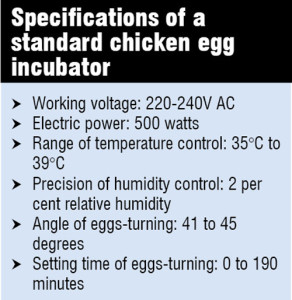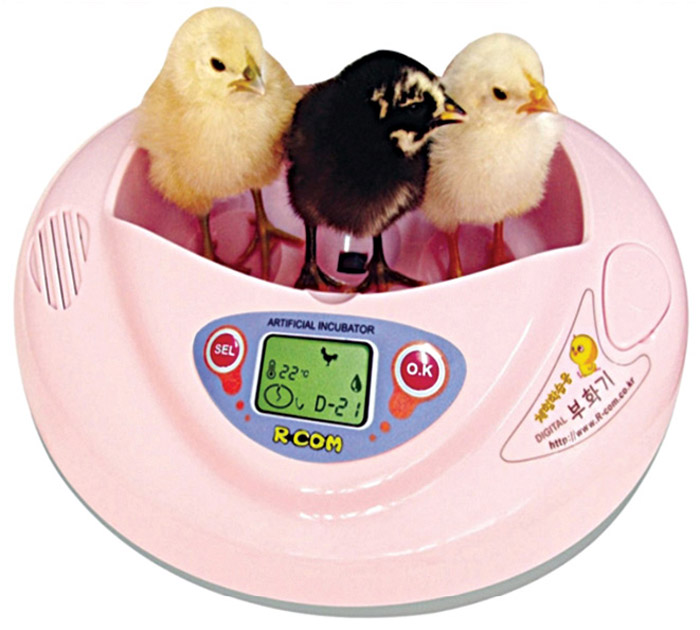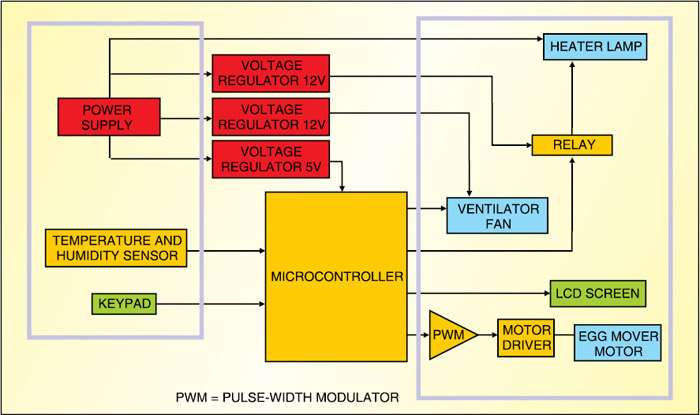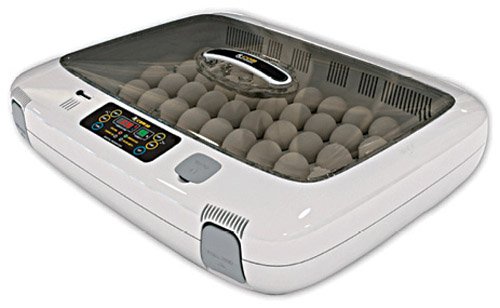
Novice poultry farmers are interested in artificial incubation of chicken eggs. Electronic egg incubator is an invention that provides this opportunity. It takes over the chicken’s job to incubate eggs until hatching. One major advantage of electronic egg incubators is their ability to automatically monitor and control the temperature and humidity required to incubate eggs.
There are two types of egg incubators available—forced-air and still-air.
Forced-air incubators have fans and automatic turners that provide internal air circulation. Still-air incubators are usually small without fans for air circulation. Forced-air incubators require little attention and can hatch a larger number of eggs than still-air incubators.
System overview
In principle, an electronic incubator needs to control four elements—temperature, humidity, ventilation and movement.
Usually, a light source (brooding lamp) is used to give suitable heating to the eggs. The percentage of humidity in the incubator is controlled by an electric fan and the status of the incubator displayed on an LCD screen. To ensure uniform heating of eggs, a stepper motor mechanism (egg roller) is used to rotate an iron rod at the bottom side and change the position of eggs.

Precision temperature and humidity sensors are used to monitor the ambient conditions within the incubator. The entire system is controlled by a microcontroller, which can process data from sensors and execute control to change the conditions of the incubator. When the microcontroller detects that the temperature is higher than normal it switches the lamp ‘off,’ and when it detects a higher humidity level the fan is switched ‘on’.
The advantage of a microcontroller-based design is that it does away with the requirement of a large quantity of electronics to perform various jobs. The microcontroller contains all the basic components that make up a computer. It has a central processing unit, read-only memory, random-access memory, arithmetic logic unit, input and output lines, timers, serial and parallel ports, digital-to-analogue converter and analogue-to-digital converter. The microcontroller chip can be easily programmed to perform different complex functions and is inexpensive.

Though optimal temperature is crucial in incubating eggs artificially, overlooking humidity can cause problems in hatching. Research has shown that optimal incubator temperature is 37.8°C (100°F) when relative humidity is 60 per cent. Oxygen concentration should be above 20 per cent, carbon dioxide below 0.5 per cent and air movement past the egg 0.34 cubic metre (12 cubic feet) per minute.
What’s latest
Advanced egg incubators running on digital micro-control technology allow users to manage incubator functions via a simple user-friendly menu on the digital display panel. In normal operation, the display shows incubation temperature, days to hatch and turning status. Opening the menu allows the user to adjust the incubation temperature unit (°C or °F), turning interval, turning angle, number of days the eggs take to hatch and high-/low-temperature alarm limits.

With digital egg incubators users need not monitor and control the incubation process, except add water. The incubator is provided with USB connection and application software. Windows-based PC software provides all the incubation controls along with records and data analysis of the incubation process—both in real time and from a history log stored in the incubator memory.
Most digital incubators are feature-packed with digital temperature control system, spongeless humidity control system and intelligent egg turning mechanism.
The author is a freelance writer and a regular contributor to EFY









HOW WE CAN WRITE A CODE FOR THE MOTOR IN mikroC software
Hi ,
I would like to make a same kind of incubator.So may i get the information about the components that you have used for it.
If possible please send me the codes too.
Thanks
Jobin
@Mishigu & @ Jobin:
I will try to publish another detailed article for DIY-ers in near future. Meanwhile you can refer this (or similar) guides to keep proceed : http://incubatorwarehouse.com/index.php/using-the-incukit